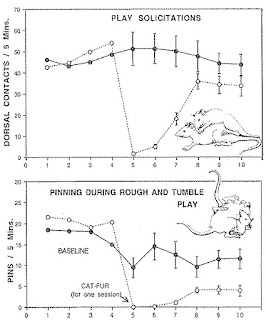Dr. Jim reads from Dr. Christine A. Courtois and Dr. Julian D. Ford's Treating Complex Traumatic Stress Disorders: Scientific Foundations and Therapeutic Models, pp. 31 and 32 on the Impact of psychological trauma on early childhood: The survival brain.
The illustration above is from Panksepp's Book on Affective Neuroscience which I found fascinating and wrote about in my book on Domestic Violence and It's Effects on Children. There I wrote:
In the context of a child getting ready to go to school at age 5, the most insidious impact DV has on preschool children relates to how exposure to DV constrains and shapes a child’s perception of self. Such children become hypervigilant to cues of danger; this deprives them of the ability to engage in spontaneous, joyful play.
DV in the home robs the preschool child of natural childhood curiosity and learning. DV transforms normal noise, and occasional disarray or spontaneous play cannot exist for fear of triggering the perpetrator (Ford, 2009, pp. 31-32; Van der Kolk, 2003, p. 293). A homologous[9] example stems from a study of juvenile rat pups at play. Panksepp (1998) described rat pups raucously playing in a large pen created for experiments. He noted they loved to wrestle and take turns pinning one another in their play. However, when a small “tuft of cat hair” or hair of other known predators of rats was thrown into the playroom, all the previous pinning and wrestling immediately stopped and the pups became “furtive, cautious, and wary” (pp. 18-19). Fear and survival circuits of the lower brain structures kicked into gear; and curiosity, openness to experience, and their attending learning immediately receded. Panksepp and his team found that the hair of dogs (which are not an evolutionary enemy or predator of rats) had no such effect.
These findings are significant relative to preschool children exposed to DV. Like Panksepp’s rat pups, children living with a violent parent habitually become “furtive, cautious, and wary,” such a fear-based mode of existence having become necessary for survival. This environment has a high potential for deforming normative development in all six domains mentioned above, including one’s sense of self and others, and even one’s ability to make meaning of his or her life.
For a good short on You Tube along these lines can be found here.


Comments
Post a Comment